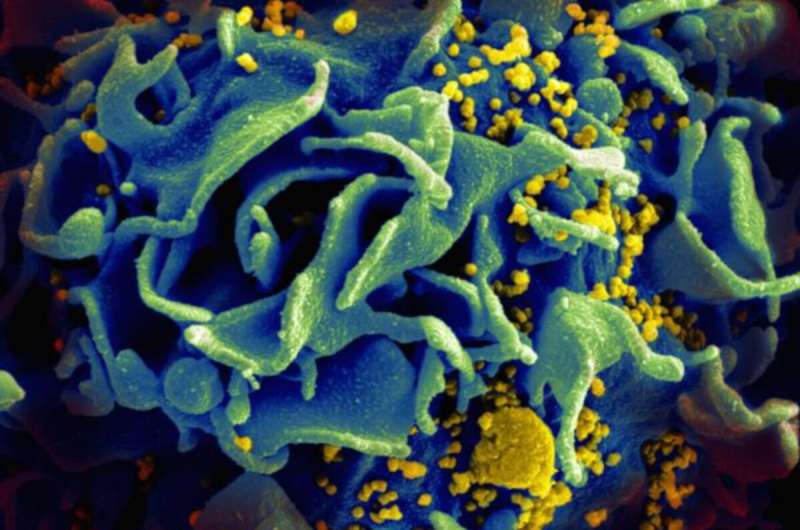CRISPR HIV Therapy: Revolutionary Breakthrough Offers Lasting Cure
Scientists have achieved a groundbreaking milestone in the fight against HIV by developing a CRISPR-based therapy that removes HIV DNA from infected human cells and prevents the virus from returning. This innovative approach represents a significant leap forward in HIV treatment, moving beyond managing the disease to potentially eradicating it altogether. Unlike current antiretroviral therapies that suppress viral activity but cannot eliminate the virus, this gene-editing technique targets HIV at its very source—the embedded viral DNA—offering hope for a lasting cure.

How CRISPR Therapy Targets HIV DNA in Infected Cells
The core challenge in curing HIV lies in the virus’s ability to hide within the genome of host cells. When HIV infects a cell, it inserts its genetic material into the host’s DNA, forming a reservoir that remains dormant and invisible to the immune system and most drugs. Traditional antiretroviral treatments effectively suppress viral replication but cannot remove this hidden viral DNA, which can reactivate if treatment stops.
The newly developed CRISPR-based therapy changes this paradigm by directly targeting and excising the integrated HIV DNA from the genome of infected cells. CRISPR (Clustered Regularly Interspaced Short Palindromic Repeats) is a revolutionary gene-editing technology that can precisely recognize and cut specific DNA sequences. In this scenario, researchers designed guide RNA molecules to identify HIV DNA sequences within the human genome, guiding the CRISPR-associated enzyme Cas9 to these sites. Once there, Cas9 cleaves the viral DNA, effectively “erasing” the virus from the cell’s genome.
Laboratory Success: Preventing Viral Rebound
In laboratory studies using human cells infected with HIV, this CRISPR therapy demonstrated remarkable results. After treatment, the infected cells showed no signs of viral rebound, meaning the virus did not return or replicate even after attempts to stimulate it. This finding suggests that the therapy can permanently disrupt the virus’s ability to persist and propagate.
This outcome is especially promising because viral rebound is a major hurdle in managing HIV infections. Under current antiretroviral therapy regimens, interruption of medication often leads to the virus rapidly reemerging from latent reservoirs. By removing these reservoirs, the CRISPR approach effectively halts the virus at its source, potentially eliminating the infection entirely.
Advantages Over Traditional Antiretroviral Therapies
Traditional HIV treatment relies heavily on antiretroviral drugs that target various stages of the viral life cycle, such as entry into cells or replication. These drugs have transformed HIV from a fatal disease to a manageable chronic condition. However, lifelong adherence to medication is required, and drug resistance can develop over time.
The CRISPR-based therapy offers several key advantages:
- Targeting the root cause: By excising the viral DNA embedded within host cells, the source of infection is removed.
- Potential for one-time treatment: Unlike daily medication, CRISPR therapy might only need to be administered once or a limited number of times.
- Reducing the risk of drug resistance: Since the therapy targets genetic material directly, there is less chance for the virus to evolve resistance as it does with antiretroviral drugs.
- Long-lasting effects: Eliminating viral reservoirs could provide a durable cure, improving quality of life for millions worldwide.
Challenges and the Path Ahead
While early results are undeniably promising, researchers emphasize that moving from laboratory success to human application involves substantial challenges. Safety is paramount—ensuring that CRISPR edits only the viral DNA and does not unintentionally alter human genes is critical to avoid adverse effects.
Moreover, clinical trials will be essential to determine the therapy’s effectiveness and safety in people living with HIV. Delivery methods to reach all infected cells in the body, particularly latent reservoirs in tissues, need refinement to maximize therapeutic benefit.
Ethical considerations, regulatory approvals, and large-scale manufacturing also remain key factors on the path toward widespread availability. Nonetheless, this breakthrough brings the scientific community a step closer to a permanent HIV cure rather than merely controlling the disease.
Transforming the Future of HIV Treatment
The development of a CRISPR-based therapy that removes HIV DNA from infected human cells signifies a revolutionary advance in medical science and the global fight against HIV/AIDS. If future studies confirm its safety and efficacy, this approach could shift the landscape from lifelong management to definitive cure for millions affected by the virus.
By directly eradicating viral genetic material, scientists are paving the way for a world where HIV infection no longer demands relentless medication or causes ongoing health risks. This breakthrough embodies the potential of gene therapy and precision medicine to transform not only HIV treatment but also how we combat other viral and genetic diseases.
As researchers continue to explore and refine this remarkable technology, hope rises for ending the HIV/AIDS epidemic once and for all—ushering in a future where HIV is no longer a global health threat but a conquerable condition.
Follow the latest updates on this exciting development with #HIVCure #CRISPRBreakthrough #MedicalInnovation #GeneTherapy.